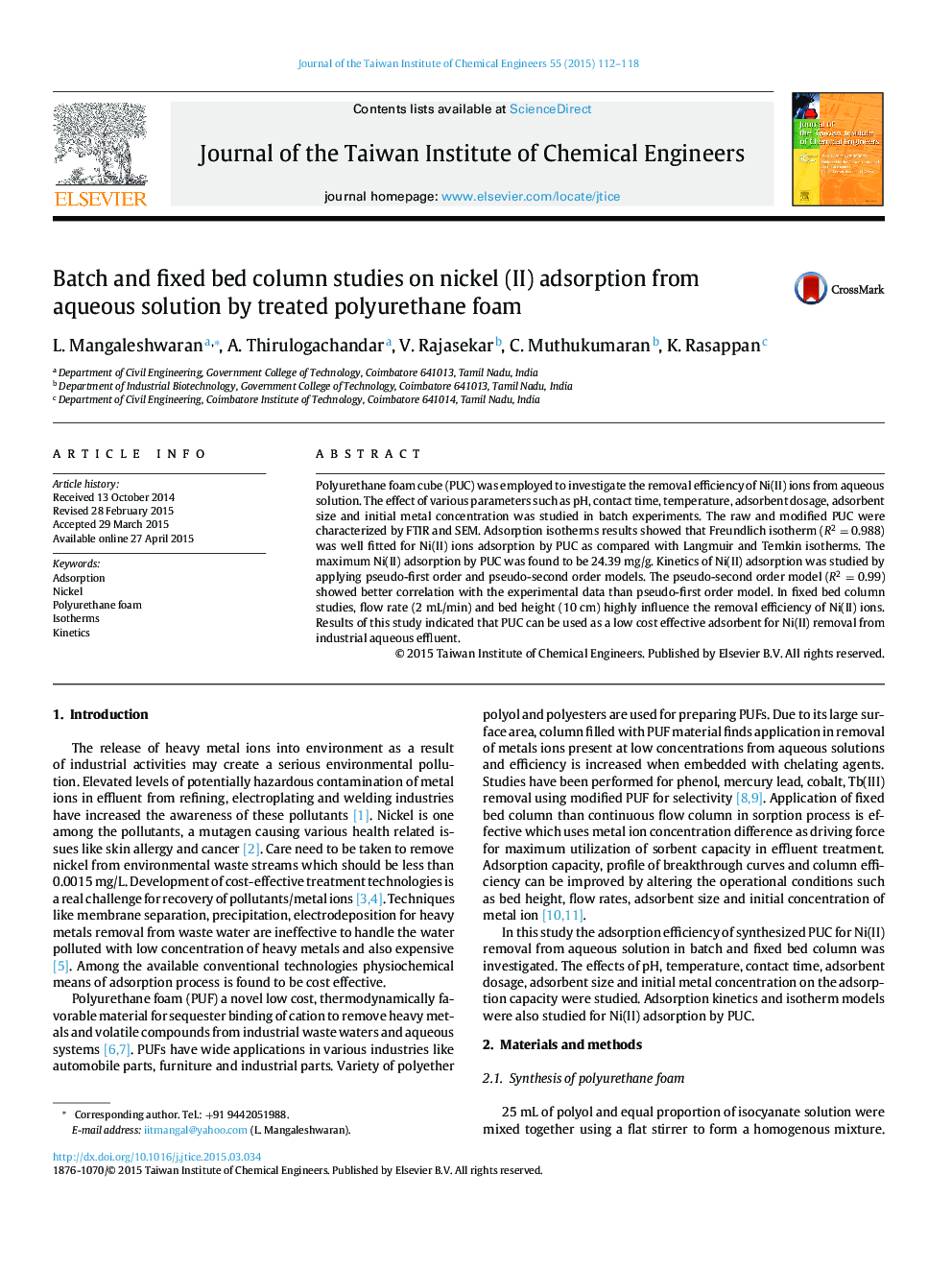| Article ID | Journal | Published Year | Pages | File Type |
|---|---|---|---|---|
| 690714 | Journal of the Taiwan Institute of Chemical Engineers | 2015 | 7 Pages |
•Ni(II) adsorption on polyurethane foam was investigated.•Effects of variables on adsorption were studied.•Adsorption process was characterized by Langmuir isotherm model.•Pseudo second order model better describes the adsorption of Ni(II) ions.•Adsorption zone profile was investigated by fixed bed column studies.
Polyurethane foam cube (PUC) was employed to investigate the removal efficiency of Ni(II) ions from aqueous solution. The effect of various parameters such as pH, contact time, temperature, adsorbent dosage, adsorbent size and initial metal concentration was studied in batch experiments. The raw and modified PUC were characterized by FTIR and SEM. Adsorption isotherms results showed that Freundlich isotherm (R2 = 0.988) was well fitted for Ni(II) ions adsorption by PUC as compared with Langmuir and Temkin isotherms. The maximum Ni(II) adsorption by PUC was found to be 24.39 mg/g. Kinetics of Ni(II) adsorption was studied by applying pseudo-first order and pseudo-second order models. The pseudo-second order model (R2 = 0.99) showed better correlation with the experimental data than pseudo-first order model. In fixed bed column studies, flow rate (2 mL/min) and bed height (10 cm) highly influence the removal efficiency of Ni(II) ions. Results of this study indicated that PUC can be used as a low cost effective adsorbent for Ni(II) removal from industrial aqueous effluent.
Graphical abstractFigure optionsDownload full-size imageDownload as PowerPoint slide
